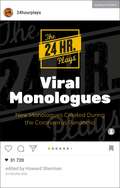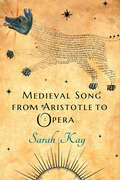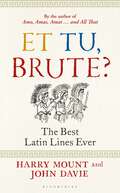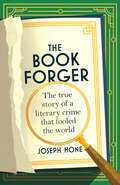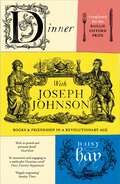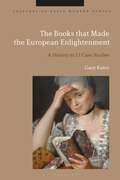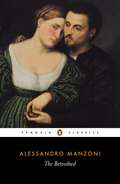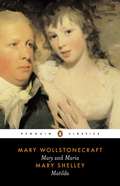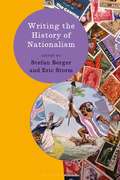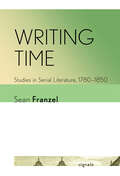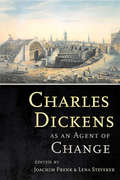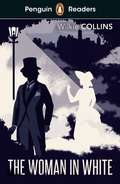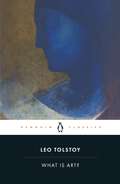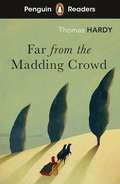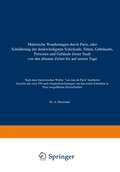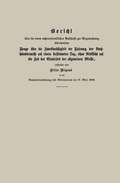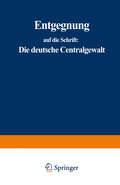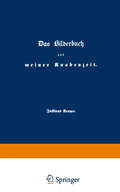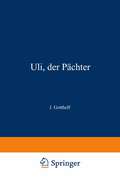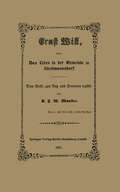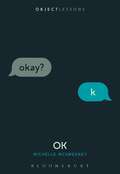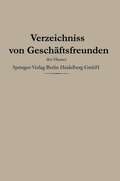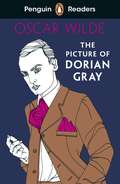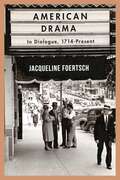- Table View
- List View
KS2 English SAT Buster Reading Answers (for Books 1-3) (PDF)
by Cgp BooksKS2 English SAT Buster - Reading Answer Booknbsp;
The 24 Hour Plays Viral Monologues: New Monologues Created During the Coronavirus Pandemic (Audition Speeches)
by The 24 Hour PlaysSince 1995 The 24 Hour Plays have been responding to theatre in the moment. As the 2020 Coronavirus pandemic brought an end to live theatre in the USA and Europe, the company sprang to work to keep the arts alive. Bringing together some of America's most prolific writers for the stage and screen, this unique and contemporary book of monologues collates the responses in dramatic fashion, making for an anthology of work that is timely, moving, irreverent and at its best, transcendent. Featuring original monologues by writers such as David Lindsay-Abaire, Clare Barron, Hansol Jung, Stephen Adly Guirgis, Christoper Oscar Peña, Jesse Eisenberg and Monique Moses this is a rich collection that can be enjoyed by actors, writers and those looking for creative responses to the global COVID-19 crisis. With over 50 monologues from the first three weeks of the project, edited by Howard Sherman, this is an important collection that documents an unprecedented moment in history whilst also offering practical resource for actors and performers.
Medieval Song from Aristotle to Opera
by Sarah KayFocusing on songs by the troubadours and trouvères from the twelfth to the fourteenth centuries, Medieval Song from Aristotle to Opera contends that song is not best analyzed as "words plus music" but rather as a distinctive way of sounding words. Rather than situating them in their immediate period, Sarah Kay fruitfully listens for and traces crosscurrents between medieval French and Occitan songs and both earlier poetry and much later opera. Reflecting on a song's songlike quality—as, for example, the sound of light in the dawn sky, as breathed by beasts, as sirenlike in its perils—Kay reimagines the diversity of songs from this period, which include inset lyrics in medieval French narratives and the works of Guillaume de Machaut, as works that are as much desired and imagined as they are actually sung and heard. Kay understands song in terms of breath, the constellations, the animal soul, and life itself. Her method also draws inspiration from opera, especially those that inventively recreate medieval song, arguing for a perspective on the manuscripts that transmit medieval song as instances of multimedia, quasi-operatic performances. Medieval Song from Aristotle to Opera features a companion website (cornellpress.manifoldapp.org/projects/medieval-song) hosting twenty-four audio or video recordings, realized by professional musicians specializing in early music, of pieces discussed in the book, together with performance scores, performance reflections, and translations of all recorded texts. These audiovisual materials represent an extension in practice of the research aims of the book—to better understand the sung dimension of medieval song.
Et tu, Brute?: The Best Latin Lines Ever
by Harry Mount John DavieThere are so many Latin phrases in everyday use that often we use them without understanding the background and context within which they were actually used. 'Carpe diem'; 'Stet'; 'Memento mori'; 'Et tu Brute' – examples would fill a book. And often these phrases are also used in English translation: 'The die is cast'; 'crossing the Rubicon'; 'Rome was not built in a day'. Many of these phrases are humorous, but they are also a rich source of wisdom: the wisdom of the ancients. The chapters of this book include: Life's Misfortunes and how to deal with them; How to deal with old age (Cicero); Why Death is nothing to fear (Lucretius); The Stoic guide to life. Each chapter starts with a quotation and is lightly sprinkled with many more, with accompanying English translations.The background to each quotation is explained so that the context is fully understood. Who crossed the Rubicon and why, for example? At a time of great political and social turbulence, more and more people are turning back to ancient wisdom as a guide to life. Here they are in touch with two classical scholars of distinction who have the common touch.
The Book Forger: The true story of a literary crime that fooled the world
by Joseph Hone'Absolutely fascinating . . . A must-read for anyone enthralled by the value and integrity of books' Janice Hallett, author of The Alperton AngelsA true detective story from the age of Agatha Christie and Dorothy L. Sayers: the literary crime that fooled the world - and the daring young booksellers who uncovered itLondon, 1932. Thomas James Wise is the toast of the literary establishment. A prominent collector and businessman, he is renowned on both sides of the Atlantic for unearthing the most stunning first editions and bringing them to market. Pompous and fearsome, with friends in high places, he is one of the most powerful men in the field of rare books.One night, two young booksellers - one a dishevelled former communist, the other a martini-swilling fan of detective stories - stumble upon a strange discrepancy. It will lead them to suspect Wise and his books are not all they seem. Inspired by the vogue for Hercule Poirot and Sherlock Holmes, the pair harness the latest developments in forensic analysis to crack the case, but find its extent is greater than they ever could have imagined. By the time they are done, their investigation will have rocked the book world to its core.This is the true story of unlikely friends coming together to expose the literary crime of the century, and of a maverick bibliophile who forged not only books but an entire life, erasing his past along the way.'The perfect piece of armchair detection' Ruth Ware, author of The Woman in Cabin 10‘Thrilling . . . reads like a detective story from the golden age’ Roland Philipps, author of A SPY NAMED ORPHAN'A great story that is truly stranger than fiction' Martin Edwards, President of the Detection Club
Dinner with Joseph Johnson: Books and Friendship in a Revolutionary Age
by Daisy Hay'Hugely engrossing... An exciting blend of ideas and personalities' John Carey, Sunday Times'Impressive... [An] elegant account... Dinner with Joseph Johnson reminds us of the excitement of a period in which inherited orthodoxies were forensically scrutinised and found lacking' Daily Telegraph________Once a week, in late eighteenth-century London, writers of contrasting politics and personalities gathered around a dining table. The host was Joseph Johnson, publisher and bookseller: a man at the heart of literary life. He was joined at dinner by a shifting constellation of extraordinary people who remade the literary world, including the Swiss artist Henry Fuseli, his chief engraver William Blake and scientists Joseph Priestley and Benjamin Franklin. William Wordsworth and Samuel Taylor Coleridge were among the attendees, as were the poet Anna Barbauld, the novelist Maria Edgeworth and the philosopher Mary Wollstonecraft.Johnson's years as a maker of books saw profound political, social, cultural and religious shifts in Britain and abroad. Several of his authors were involved in the struggles for reform; they pioneered revolutions in medical treatment, proclaimed the rights of women and children and charted the evolution of Britain's relationship with America and Europe.Johnson made their voices heard even when external forces conspired to silence them. In this remarkable portrait of a revolutionary age, Daisy Hay captures a changing nation through the stories of the men and women who wrote it into being, and whose ideas still influence us today.'Inspired... Joseph Johnson was the man who made the [Romantic] revolution possible... Truly a biography of the spirit of the age' Jonathan Bate
The Books that Made the European Enlightenment: A History in 12 Case Studies (Cultures of Early Modern Europe)
by Gary KatesIn contrast to traditional Enlightenment studies that focus solely on authors and ideas, Gary Kates' employs a literary lens to offer a wholly original history of the period in Europe from 1699 to 1780. Each chapter is a biography of a book which tells the story of the text from its inception through to the revolutionary era, with wider aspects of the Enlightenment era being revealed through the narrative of the book's publication and reception. Here, Kates joins new approaches to book history with more traditional intellectual history by treating authors, publishers, and readers in a balanced fashion throughout.Using a unique database of 18th-century editions representing 5,000 titles, the book looks at the multifaceted significance of bestsellers from the time. It analyses key works by Voltaire, Adam Smith, Madame de Graffigny, Jean-Jacques Rousseau and David Hume and champions the importance of a crucial innovation of the age: the rise of the 'erudite blockbuster', which for the first time in European history, helped to popularize political theory among a large portion of the middling classes. Kates also highlights how, when, and why some of these books were read in the European colonies, as well as incorporating the responses of both ordinary men and women as part of the reception histories that are so integral to the volume.
The Betrothed: A New Translation, Volume 2 - Primary Source Edition
by Alessandro Manzoni Bruce PenmanSet in Lombardy during the Spanish occupation of the late 1620s, The Betrothed tells the story of two young lovers, Renzo and Lucia, prevented from marrying by the petty tyrant Don Rodrigo, who desires Lucia for himself. Forced to flee, they are then cruelly separated, and must face many dangers including plague, famine and imprisonment, and confront a variety of strange characters - the mysterious Nun of Monza, the fiery Father Cristoforo and the sinister 'Unnamed' - in their struggle to be reunited. A vigorous portrayal of enduring passion, The Betrothed's exploration of love, power and faith presents a whirling panorama of seventeenth-century Italian life and is one of the greatest European historical novels.
Mary and Maria, Matilda: Penguin Classics
by Mary Wollstonecraft Mary Shelley Janet ToddThese three works of fiction - two by Mary Wollstonecraft, the radical author of A Vindication of the Rights of Woman, and one by her daughter Mary Shelley, creator of Frankenstein - are powerfully emotive stories that combine passion with forceful feminist argument. In Mary Wollstonecraft's Mary, the heroine flees her young husband in order to nurse her dearest friend, Ann, and finds genuine love, while Maria tells of a desperate young woman who seeks consolation in the arms of another man after the loss of her child. And Mary Shelley's Matilda - suppressed for over a century - tells the story of a woman alienated from society by the incestuous passion of her father. Humane, compassionate and highly controversial, these stories demonstrate the strongly original genius of their authors.
Writing the History of Nationalism (Writing History)
by Stefan Berger Eric StormWhat is nationalism and how can we study it from a historical perspective? Writing the History of Nationalism answers this question by examining eleven historical approaches to nationalism studies in theory and practice.An impressive cast of contributors cover the history of nationalism from a wide range of thematic approaches, from traditional modernist and Marxist perspectives to more recent debates around gender. postcolonialism and the global turn in history writing.This book is essential reading for undergraduate students of history, politics and sociology wanting to understand the complex yet fascinating history of nationalism.
Writing Time: Studies in Serial Literature, 1780–1850 (Signale: Modern German Letters, Cultures, and Thought)
by Sean FranzelWriting Time shows how serial literature based in journals and anthologies shaped the awareness of time at a transformative moment in the European literary and political landscapes. Sean Franzel explores how German-speaking authors and editors "write time" both by writing about time and by mapping time itself through specific literary formats.Through case studies of such writers as F. J. Bertuch, K. A. Böttinger, J. W. Goethe, Ludwig Börne, and Heinrich Heine, Franzel analyzes how serial writing predicated on open-ended continuation becomes a privileged mode of social commentary and literary entertainment and provides readers with an ongoing "history" of the present, or Zeitgeschichte. Drawing from media theory and periodical studies as well as from Reinhart Koselleck's work on processes of temporalization and "untimely" models of historical time, Writing Time presents "smaller" literary forms—the urban tableau, cultural reportage, and caricature—as new ways of imagining temporal unfolding, recentering periodicals and other serial forms at the heart of nineteenth-century print culture.
Charles Dickens as an Agent of Change
Sixteen scholars from across the globe come together in Charles Dickens as an Agent of Change to show how Dickens was (and still is) the consummate change agent. His works, bursting with restless energy in the Inimitable's protean style, registered and commented on the ongoing changes in the Victorian world while the Victorians' fictional and factional worlds kept (and keep) changing. The essays from notable Dickens scholars—Malcolm Andrews, Matthias Bauer, Joel J. Brattin, Doris Feldmann, Herbert Foltinek, Robert Heaman, Michael Hollington, Bert Hornback, Norbert Lennartz, Chris Louttit, Jerome Meckier, Nancy Aycock Metz, David Paroissien, Christopher Pittard, and Robert Tracy—suggest the many ways in which the notion of change has found entry into and is negotiated in Dickens' works through four aspects: social change, political and ideological change, literary change, and cultural change. An afterword by the late Edgar Rosenberg adds a personal account of how Dickens changed the life of one eminent Dickensian.
Penguin Readers Level 7: The Woman in White (ELT Graded Reader)
by Wilkie CollinsPenguin Readers is an ELT graded reader series for learners of English as a foreign language. Each title includes carefully adapted text, new illustrations and language learning exercises. The eBook edition does not include access to additional online resources.Titles include popular classics, exciting contemporary fiction, and thought-provoking non-fiction, introducing language learners to bestselling authors and compelling content.The eight levels of Penguin Readers follow the Common European Framework of Reference for language learning (CEFR). Exercises at the back of each Reader help language learners to practise grammar, vocabulary, and key exam skills. Before, during and after-reading questions test readers' story comprehension and develop vocabulary.Visit the Penguin Readers websiteExclusively with the print edition, readers can unlock online resources including a digital book, audio edition, lesson plans and answer keys.One night when Walter Hartwright is walking home, he meets and helps the mysterious 'woman in white'. Soon after this meeting, Walter starts a job as a drawing teacher in the north of England and falls in love with his student, Laura Fairlie. But Laura is engaged to Sir Percival Glyde. Then Laura receives a letter warning her not to marry Glyde. Walter is sure that the letter comes from the woman in white...
What is Art?: What Is Art? The Christian Teaching - Scholar's Choice Edition (Barnes And Noble Digital Library)
by Leo Tolstoy Larissa Volokhonsky Richard PevearDuring his decades of world fame as a novelist, Tolstoy also wrote prolifically in a series of essays and polemics on issues of morality, social justice and religion. These works culminated in What is Art?, published in 1898. Impassioned and iconoclastic, this powerfully influential work both criticizes the elitist nature of art in nineteenth-century Western society, and rejects the idea that its sole purpose should be the creation of beauty. The works of Dante, Michelangelo, Shakespeare, Beethoven, Baudelaire and Wagner are all vigorously condemned, as Tolstoy explores what he believes to be the spiritual role of the artist - arguing that true art must work with religion and science as a force for the advancement of mankind.
Penguin Readers Level 5: Far from the Madding Crowd (ELT Graded Reader)
by Thomas HardyPenguin Readers is an ELT graded reader series for learners of English as a foreign language. Each title includes carefully adapted text, new illustrations and language learning exercises. The eBook edition does not include access to additional online resources.Titles include popular classics, exciting contemporary fiction, and thought-provoking non-fiction, introducing language learners to bestselling authors and compelling content.The eight levels of Penguin Readers follow the Common European Framework of Reference for language learning (CEFR). Exercises at the back of each Reader help language learners to practise grammar, vocabulary, and key exam skills. Before, during and after-reading questions test readers' story comprehension and develop vocabulary.Visit the Penguin Readers websiteExclusively with the print edition, readers can unlock online resources including a digital book, audio edition, lesson plans and answer keys.Bathsheba Everdene is young and beautiful. She has her own farm and she likes to do things her way. Three men are in love with her - a poor shepherd, a rich farmer and a soldier. Which man will she choose, and will he be the right one for her?
Malerische Wanderungen durch Paris, oder Schilderung der denkwürdigsten Schicksale, Sitten, Gebräuche, Personen und Gebäude dieser Stadt von den áltesten Zeiten bis auf unsere Tage
by A. DiezmannBericht über die einem außerordentlichen Ausschusse zur Begutachtung überwiesene Frage über die Zweckmäßigkeit der Fixirung der Buchhändlermesse auf einen bestimmten Tag, ohne Rücksicht auf die Zeit des Eintritts der allgemeinen Messe
by Otto WigandOK (Object Lessons)
by Michelle McSweeneyObject Lessons is a series of short, beautifully designed books about the hidden lives of ordinary things."OK" as a word accepts proposals, describes the world as satisfactory (but not good), provides conversational momentum, or even agrees (or disagrees). OK as an object, however, tells a story of how technology writes itself into language, permanently altering communication. OK is a young word, less than 200 years old. It began as an acronym for “all correct” when the steam-powered printing press pushed newspapers into the mainstream. Today it is spoken and written by nearly everyone in the world. Drawing on linguistics, history, and new media studies, Michelle McSweeney traces OK from its birth in the Penny Presses through telephone lines, grammar books, and television signals into the digital age.Nearly ubiquitous and often overlooked, OK illustrates the never-ending dance between language, technology, and culture, and offers lessons for our own techno-historical moment.Object Lessons is published in partnership with an essay series in The Atlantic.
Penguin Readers Level 3: The Picture of Dorian Gray (ELT Graded Reader)
by Oscar WildePenguin Readers is an ELT graded reader series for learners of English as a foreign language. Each title includes carefully adapted text, new illustrations and language learning exercises. The eBook edition does not include access to additional online resources.Titles include popular classics, exciting contemporary fiction, and thought-provoking non-fiction, introducing language learners to bestselling authors and compelling content.The eight levels of Penguin Readers follow the Common European Framework of Reference for language learning (CEFR). Exercises at the back of each Reader help language learners to practise grammar, vocabulary, and key exam skills. Before, during and after-reading questions test readers' story comprehension and develop vocabulary.Visit the Penguin Readers websiteExclusively with the print edition, readers can unlock online resources including a digital book, audio edition, lesson plans and answer keys.An artist paints a beautiful young man called Dorian Gray. When Dorian sees the picture, he decides to give his soul to keep his beautiful face. He lives a bad life and he is bad to many people, but his face never changes. However, in a room upstairs, the portrait gets uglier and uglier.
American Drama: In Dialogue, 1714-Present
by Jacqueline FoertschAn essential introductory textbook that guides students through 300 years of American plays, as well as their remarkable engagement with texts from across the Atlantic. Divided into seven historical periods, Jacqueline Foertsch offers unique overviews of 38 American plays and their reception, from Robert Hunter's Androboros (c.1714) to Lin-Manuel Miranda's Hamilton (2015). Each historical section begins with an overseas play that proved influential to American playwrights in that period, demonstrating to students an astonishing dialogue taking place across the Atlantic. This is an ideal core text for modules on American Drama – or a supplementary text for broader modules on American Literature – which may be offered at the upper levels of an undergraduate literature, drama, theatre studies or American studies degree. In addition it is a crucial resource for students who may be studying American drama as part of a taught postgraduate degree in literature, drama or American studies.

